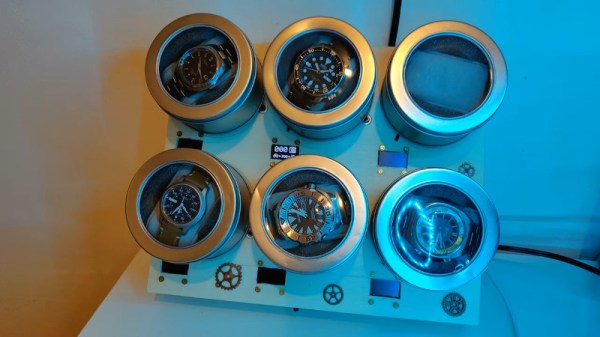Mechanical watches are triumphs of engineering on a tiny scale. Capable of keeping time by capturing the energy of the user’s own movements, they never need batteries changed. Unfortunately, they quickly lose time when not worn for a few days. To solve that problem, [sblantipodi] built a smart watch winder.
The overall build consists of six individual winder units. Each one has an ESP8266EX D1 Mini microcontroller, hooked up to a 28BYJ48 stepper motor with a ULN2003 motor driver. There’s also an OLED screen for status information. When commanded, the stepper motor turns, rotating a watch case to wind the timepieces. Control is via voice command, thanks to a Google Home Mini and a Raspberry Pi running Home Assistant. Watches can be wound individually, or all together, depending on the command given.
It’s a device that would serve any collector well, and could come in handy for watchmakers to wind customer watches waiting for pickup. Other similar builds have used special silent drives to ensure the device doesn’t disturb sleep when used on a bedside table. Video after the break.
Continue reading “Watch Winder Keeps Your Timepieces Ticking”













